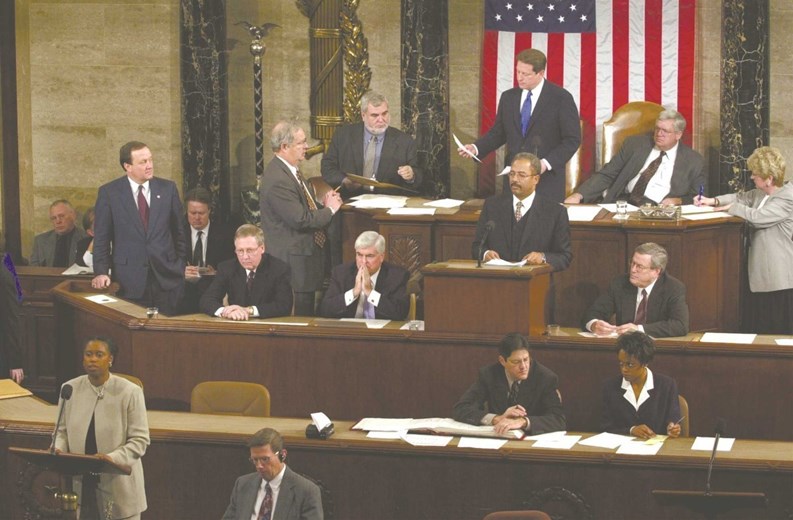Recent developments, legislatively, environmentally and technologically have led to considerable changes in the New York insurance marketplace. And such changes, as managers know, often lead to added paperwork, confusing requirements, and tricky legal questions for condo boards. While many new insurance products—such as the heavily-hyped “terrorism coverage”—have failed to catch on for the condo market, modifications in traditional coverage have altered the insurance picture in ways previously unseen.
Many insurance insiders now see condos as liabilities in the wake of the Great Recession. And that, in turn, presents problems for management. Although unit owners pay reserve fees on an ongoing basis, insurers fear some managers may defer maintenance in a bad economy. When that happens, say experts, condo properties become a bad risk, producing losses that are passed on to condo associations.
“We’re starting to see some of the companies’ loss ratios become unprofitable, and when that happens you usually start seeing the big premiums,” says Luke Sevigney, Elite Condominium Program manager at Massachusetts-based Sevigney-Lyons Insurance. “They’re being a lot stricter on claims. When you’re marketing a condo association, they’re really scrutinizing the loss runs and they’re doing a lot of engineering on sprinkler systems and stuff to make sure everything’s up to par.”
Insurance professionals say the recent housing bubble has led to confusion for managers and agents alike. “I think the concern for insurance companies is that often times condo associations may feel that the value of those condominiums have come down in price,” says Loretta Worters, vice president of communications at the Insurance Information Institute (I.I.I.). “So a lot of associations tend to think they can reduce their amount of insurance because it’s based on the value, when, in fact, the cost of insurance is based on rebuilding costs.” And the confusion doesn’t end there, explains Sevigney, whose firm has guided many associations through additional costs and increased scrutiny in the wake of the housing crisis. “It’s made it a nightmare, to be quite honest. In the past we would get requests for certificates and a normal certificate would do it. Now they’re really scrutinizing everything—especially in terms of the employee dishonesty coverage. That was a coverage they were never concerned about up until about a year ago. Now we’re getting requests from some of these companies to have fidelity bonds or employee dishonesty coverage in amounts in excess of $500,000. It’s an additional cost to these condo associations.”
Everything's Not Covered
Everyone thinks that D & O insurance is protecting your co-op or condo from financial crime, but that's not necessarily the case according to Kevin Davis, president of Kevin Davis Insurance Services, based in California.
“With the rise of sophisticated online crimes such as hacking and identity theft many boards are shocked to discover that if they are the victims of crimes like these they won't be covered by their policy.
Davis explains that most D & O insurance policies only cover malfeasance by employees or board members, not by someone who may have hacked into an association's bank account and withdrew all of the money. “I've seen a tremendous increase in claims such as these, and the insurance companies are not paying; 60 to 70 percent of these claims are denied because the perpetrator was not a building employee or association board member.”
Davis poses a hypothetical example, “suppose a building superintendent brings his teenage daughter into work and while he's in Unit 14A clearing a clogged drain, his daughter hacks into the building's management account and transfers money into her account. In that case, the building is not covered since she is not a building employee.”
“This is a growing problem and one that I'm actively trying to educate the industry about. With the sophistication of online criminals growing by leaps and bound, associations are becoming more desirable targets,” explains Davis.
That isn't to say that if an association is a victim of a crime like this they won't get their money returned but it can take a very long time. Having the right kind of protection can prevent this. A rider can be added to any existing D & O policy to cover any financial malfeasance committed by by a non-employee; this coverage typically is an additional 20 percent to the D & O insurance premium.
Davis thinks it is well worth it. “If an association is a victim they'll eventually get their money back, in most cases but it will take time and boards sometimes can't wait that long,” he says. “This additional coverage will ensure that an association will have their money returned quickly to mitigate the damage,” says Davis.
More Flood Woes on Tap
Flood insurance is another area receiving increased scrutiny in recent months. According to Sevigney, “They used to be a little bit lenient on that but now they're asking for huge amounts of flood insurance coverage for these associations—in many cases, in excess of what the actual replacement cost is on the structure.” In fact, the current marketplace has led some lenders to demand flood insurance coverage totaling $250,000 per unit. “If you have a small, four unit complex—each unit is 500 square feet—they can request up to a million dollars in coverage…and hold up closings.”
Adding to flood-related insurance woes, recent FEMA rezoning throughout much of the Northeast has forced many condo properties to deal with flood insurance issues for the very first time. “[Some] units have mortgages on them, and when FEMA comes in and changes these flood zones…the mortgage companies call up and say they need to have a flood insurance policy. Now, from a reconstruction standpoint, these individuals buying flood insurance policies usually doesn’t make a lot of sense…if you have only one unit [covered] in a ten unit building,” Sevigney notes. “So, in a lot of cases, the whole association will have to buy a policy. And flood insurance is expensive. From a standpoint of cost, in a lot of cases, the flood insurance is four times as expensive as all of the other things combined.”
“Disaster losses along the coast are likely to escalate in the coming years,” says Worters, “in part because of huge increases in development. One catastrophe modeling company predict losses will double every decade or so due to growing density and more expensive buildings.”
In fact, recent U.S. Census Bureau statistics indicate that nearly 35,000,000 people were seriously threatened by Atlantic hurricanes in 2006, up from 10,000,000 in 1950. Such statistics have made many insurers reluctant to cover coastal properties. And those who do not, frequently impose costly wind deductibles. While some wind-weary states like Florida have legal limits on wind deductible percentages, New York has no such limitations, leaving insurers free to impose any deductible they like. “In a lot of cases,” explains Sevigney, “we have some of these buildings that are $10 million or $20 million dollar buildings that have a two percent wind deductible on it. That’s a huge deductible. That is not a deductible on the loss, it’s a deductible on the structure.”
High-Risk Business
Wind/hail deductibles—deductibles relating to damage by traditional thunderstorms—and the more-specific “hurricane deductibles” are rapidly becoming the most significant cost concerns in the aftermath of a wind-related disaster. Though the steepest wind deductibles will top out at five percent, experts say hurricane deductibles can rise even higher in risk-prone areas. The amount an association will pay depends on the property’s insured value and the "trigger" selected by the insurance company. Though some remaining insurers do offer traditional deductible-based wind coverage in exchange for higher premiums, such terms are increasingly rare in New York’s coastal areas.
“Many insurers have reduced the number of policyholders they insure in high-risk areas,” says Worters. “Some insurers, who have too much exposure in an area, may decide to not write in that area. While others, who have less exposure, will take up the slack.” Sevigney fears the market may eventually run dry in terms of its ability to cover coastal condominiums. “It’s become an issue,” he says. “The ones that are writing these things are writing them at huge premiums. A lot of companies now refuse to write any thing within a mile of the coast and that’s increasing rapidly—the distance margin.”
The trigger for hurricane deductibles vs. wind deductibles—the point at which the more severe hurricane deductibles will apply to a wind-damaged property—varies widely by region and company. But regardless of region, experts say most triggers have common characteristics: they are typically tied to the issuance of National Weather Service warnings, tend to vary based on the hurricane’s “category,” and often remain in effect after the storm has passed.
The Independent Insurance Agents and Brokers of New York (IIABNY) has been lobbying hard to make this disparity a thing of the past. David M. Gelia, the chairman of IIABNY, wrote in a recent postion paper that, “IIABNY is concerned with the lack of standardization among homeowners’ insurance policies with respect to the definition of the event that triggers a policyholder’s windstorm deductible. Windstorm deductibles are commonly used by insurance companies on homeowners' policies in coastal regions. These deductibles can be "flat" (specific dollar amounts) or percentage deductibles (a percentage of the building value). The trigger point for these deductibles varies among companies and can be based on wind speed, category of storm and other factors.”
He stated further that IIABNY “believes that the lack of standardization in windstorm triggers will cause significant consumer confusion in the event there is a windstorm that affects the state’s coastal region. Neighboring homeowners equally affected by a coastal storm that have homeowner’s policies with different windstorm coverage triggers may become quite frustrated to find that one homeowner has coverage for the damage and the other does not. Standardizing the trigger point at which an insurer’s windstorm deductible will apply will protect consumers against this type of scenario.
As a result of IIABNY’s advocacy on this issue, the New York Insurance Department recently proposed rules regarding deductible triggers, including a new distinction between windstorm and hurricane deductibles. While the rules contain some favorable standardization criteria for triggers, IIABNY will continue to work with the department to ensure the rules provided uniformity to the greatest extent possible without jeopardizing availability.”
In March 2011, a bill was introduced into the New York State Senate and Assembly which would target this problem directly. Bill A3283/S3387 would provide that the New York State Superintendent of Insurance establish standards for hurricane windstorm deductibles, creating uniformity in the operation of such deductibles with respect to the triggering event. This bill has passed the Assembly and been referred to the Senate’s Insurance Committee. It is expected to pass the state Senate as well.
Regardless of your region, the simplest advice is still the best: be prepared, and encourage your individual unit owners to be prepared, as well. Management companies should proactively encourage the purchase of HO-6 coverage for all unit owners—even those who aren’t required to carry it. “Speak with your agent,” says Worters. “Also look at what your bylaws and rules are. Make sure you have enough coverage.” Good advice in any season.
Matthew Worley is a freelance writer and a frequent contributor to The Cooperator and other publications.







Comments
Leave a Comment